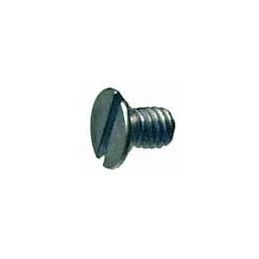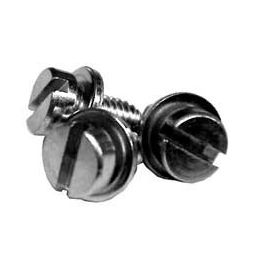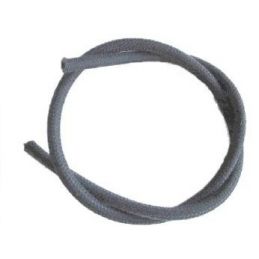Remote Oil Cooler Placement
In this article I want to talk about where to place a remote oil cooler. If you’re not running one and never intend to, well this article is not for you. Here in Redding, CA you should have one. It’s damn hot here in the summertime. Keep in mind here that I run a “full flow” system which also retains the stock oil cooler. I have written an article on stock oil coolers so I will refer you back to that on which stock oil cooler to run.
Let’s first talk about the remote coolers themselves. There is the old tube type. The way they work is oil travels in the tube and the aluminum fins transfer the heat from the tube to the air. These work but not my favorite. For one, the fins are easily bent, plus the heat transfer from the tube to the fin is not the greatest compared to a mesa style cooler. Again, they work but there are better coolers out there. The Mesa style cooler for me works the best, so in this article I will be talking about them. It is made up of plates where the plates are fin like. The oil travels through the fin (plate) in a criss cross pattern. This makes for better transfer of the heat to the air. Also being that the fins (plates) have a criss cross pattern they are way stronger and will not bend easily. Oh you can bend them but it takes some effort. As a demonstration I put them on the floor and stand on them. Try that with a tube style. So this remote cooler style is the one that I like. The next thing is they come in different sizes. They are sized by the number of plates. The most common are: 24, 48, 72, and 96 plate. So what should I use? This is my general rule and later I will explain why. On a bug, baja bug, ghia, thing, I use the 72 plate. On a bus I use a 96 plate. Well what about the 24 or 48? I will use them if placement doesn’t allow a 72 or 96 and I will use two of them.
Now let’s talk about placement. A lot of these so called remote oil cooler kits tell you to mount them in front of the fan intake. In other words on the back of the fan shroud in front of the fan. Really? What the hell? The whole idea of a remote oil cooler is to get the heat off the cylinders. By mounting it there your just sucking in hot air now and what? Blowing it on top of your cylinders. Who in the hell writes these instructions? That’s like wiping before you poop. Defeats the purpose. In my way of thinking don’t we want to get the heat away from the motor? I put cooler and the filter away from the engine compartment, get the heat away from the fan.
Bugs, Ghia, Thing, Type 3 I hang a 72 plate cooler above the transmission. The 72 plate cooler is the right size for where I put them and you can still get to everything like the clutch cable and throttle cable. What I end up doing to using 90 degree fittings and face the fitting ports to the left. That way the 90 degree fittings now are facing the rear. The rear one being turned 45 degrees down and the forward one being inline with the cooler. The next trick is where and how. I use muffler clamp bolts as they seem to be the right length. I do not want to mount the cooler flush. I want air to be able to travel through it. I try and leave at least a 1” gap between the cooler and the deck, in other words I hang it from the deck.
.
Now bolting it. Put the head of the bolt down through the deck (area behind the rear seat) then you can do two different things here. One is to make a 1” splacer out of some tubing and slide the spacer on the bolt from underneath then the flange of the cooler, then a nylock nut. The other way is to thread a regular nut onto the bolt then the cooler flange and then a nylock nut and sandwich the cooler flange between the two nuts. When it comes to routing the lines, I use the forward fitting as my in and the rear fitting as my return or out. On most Baja bugs this placement works well too. If you play in a lot of mud though you will want to hose it off once in awhile. If you have lots of cage under this area you can see if you place two 48 plate coolers up in there. One on each side of the deck or whatever fits and just run the “out” of one cooler to the “in” of the other.
On buses, I use the 96 plate cooler if my bus doesn’t have the belly pans. What are belly pans? If your bus has a sunroof or double doors they came with belly pans that inclose the frame in the center of the bus. We will talk about both but for right now let’s talk about the buses without those pans. If you look under your bus from the frame to the outer rocker in front of the driver side rear tire you will see cross members that hold up the floor. We are looking for the members that look like an “I” beam. We want to put the cooler in between two rear ones. Now we will be drilling a hole in the lip of the “I” beam and we have to be dead on as there is not much of a lip there. I use 6mm bolts here. Two short ones as I mount the front of the cooler flush (forward “I” beam) and the rear I use longer bolts in order to use a 1” spacer between the cooler flange and “I” beam. I face both fitting towards the rear tire.
I put my hoses on the inside of the frame and follow the frame back to the motor. Strapping the hoses apart and to the frame. Why do I not strap the hoses together? Well I don’t want the hot hose heating up the return hose. So separate them. Doesn’t have to be much but apart does the trick.
Buses with the belly pans are a little tricky. On early buses up to 1967 I have welded tabs to the transmission forks in front of the hanger. Then bolted the 96 plate cooler to that with the fitting facing the drivers side. It gets lots of air there but routing the hoses is not clean and can be a bitch.
On buses 68 and later I use two 72 plate coolers and mount them between the torrion housing and the body with the fitting facing the rear of the bus. It requires making tabs and welding them on. Again a bitch, but works well.
On sand rails or tube cars just mount the cooler away from the motor. One customer here spent a lot of time making brackets to put a 96 plate cooler on and he put it right in front of the fan. Why? Because that’s what the instructions told him to do. The reason he was here, is to get his motor rebuilt. I wouldn’t give it back until he moved it. Bottom line, put it away from the fan. If you put it up in the air flow you can use a smaller plate cooler, than if you put it somewhere that doesn’t get as much air.
All this talk about remote oil coolers. Do you need one? I don’t know. You will have to put an oil temp gauge on your motor to see. Do I need a fan on the cooler? It doesn’t hurt to have one that’s for sure, but when the cooler is above the trans things get tight for a fan. On everything but a 72 and later bus I usually don’t run one. Stay cool Gang.







